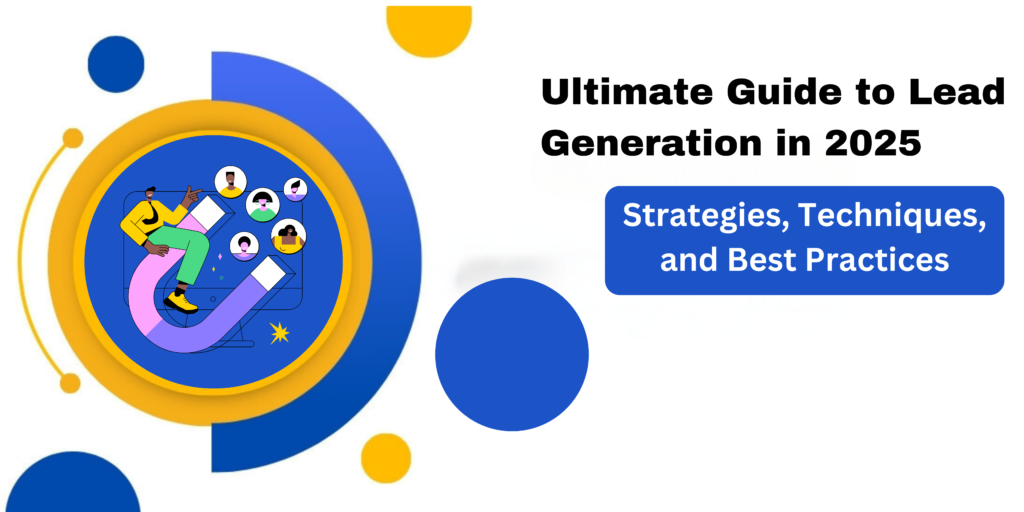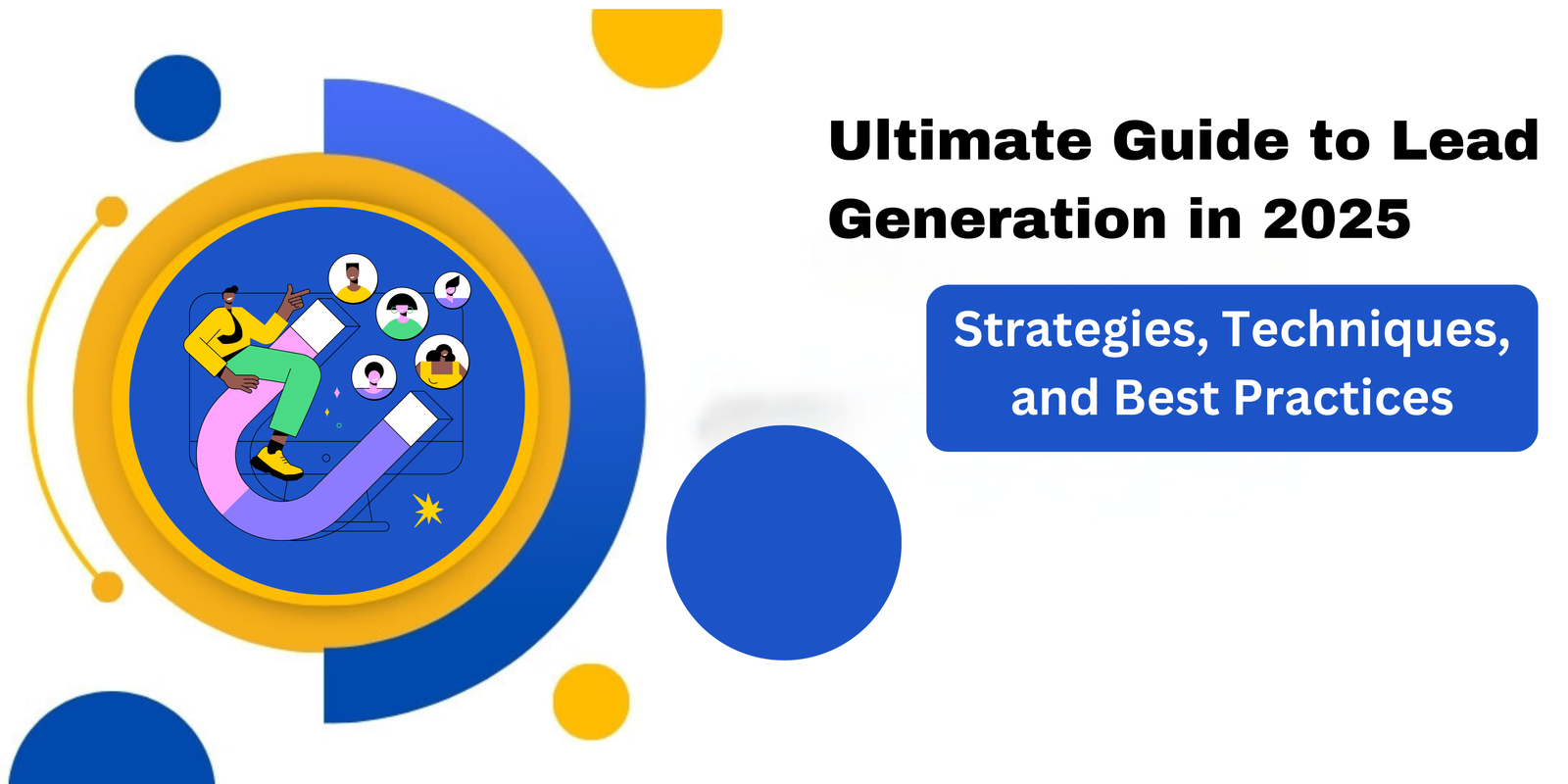The Ultimate Guide to Lead Generation in 2025: Strategies, Techniques, and Best Practices

What is Lead Generation?
Lead generation is defining the future of every business in today’s digital 2025. It is a process where a business identifies the current customers it can develop into prospective buyers or clients for the development of a product or service. Lead generation means identifying the source that may potentially prove resourceful in getting customers through the company via contact information, which involves modern-day advancements: data analytics, artificial intelligence in managing relationships, and customized business engagements.
Why is Lead Generation Important?
To be effective, lead generation has to be coupled with qualification processes for customers, so generating leads alone would need to be supplemented with other factors. It provides an organization with a solid yet flexible foundation for the future-it can build and create a viable consistent niche to meet needs it would otherwise not be able to serve.
Lead generation would ensure that there was some return for investment in marketing efforts targeted toward the already interested. Anyone would view lead generation to be precisely showing prospects the company’s wares-no more, no less-then they move again to other barriers to allow them through. Such lead generation processes are extremely informative on customer behavior, preferences, and current market trends by they’re an ongoing journey for an organization to refine its efforts of conversion.
Sales Lead Generation Funnel
The funnel of lead generation for modern customers has changed as their behavior and technology have changed. The upper funnel awareness stage talks about how you meet a prospective customer through any digital outlet. Here, the typical work of content marketing, social media presence, and carefully chosen advertising comes into play to introduce your brand to the prospects.
The interests stage involves prospects beginning to interact with content as well being curious about one’s offerings. It is during this period that personalized experiences and interactive content become critical to nurture interest. Then comes the evaluation stage, during which prospects are seen evaluating the offerings before making their choices. In this evaluation stage, case studies, and the best product demos, build confidence in the offering.
Finally, the action stage becomes the culmination of all effort put into lead generation where the prospect becomes ready to make a decision. Now is the time when target messaging, special offers, and personalized proposals work for converting leads into customers.
How to Generate Leads
Lead generation 2025 must employ a comprehensive approach-a multi-channel, multi-technology approach. Strong digital presence starts with a well-designed, functional, mobile website with the addition of AI-powered features such as chatbots and personalized content delivery. Content marketing will continue to be formidable, but with added ingredients of interactive elements, enriched by video and, in some cases, augmented reality, which will serve one purpose: to engage customers with the brand in ever more immersive ways.
Social media posting is no longer the measure of social media engagement. Today, social media has gone beyond that into matters such as social commerce, live streaming, and community building in order to meaningfully connect potential customers to a brand. More sophisticated forms of marketing automation now apply advanced predictive analytics and behavioral tracking to deliver personalized experiences at scale.
Lead Generation Marketing Strategies
Currently, lead generation marketing methods include generating value and holding the relationship with the target. Inherent marketing is as important today but then also involves voice and visual search optimization as well as advanced content delivery methods. Account-based marketing has risen to prominence, allowing firms to formulate content and engagement strategies accurately.
Hyper-personalization and interactivity revolutionize email marketing, thus maximizing effectiveness. From the traditional posts to full-fledged experiences plus social commerce integration, social media marketing is indeed using many channels and forms today.
Lead Generation Techniques and Examples
Effective lead generation in 2025 combines traditional methods with newer ones. Content marketing now features virtual reality experiences, personalization by AI, and some interactive components that can engage prospects on multiple levels. Landing pages currently offer dynamic content adaptation as well as real-time personalization based on visitor behavior.
Social proof gains ever greater importance, as customer testimonials, case studies, and user-generated content take major places in building trust. Today, lead magnets are more than simple downloadable content; they can include virtual consulting, interactive tools, or personalized resources offering immediate value to the prospect.
Lead Generation Ideas and Implementation
Incorporating such technologies into human insight brings about the best lead generation techniques. For example, using AI to personalize communication, create interactive content to engage prospects, or even creating virtual events that are inherently valuable in addition to being lead generators. Do ensure to concentrate on how the experiences you create resonate with your target audience, as this should accompany clearly defined value in every interaction.
How to Qualify Leads
Lead qualification is highly sophisticated today due to the crux of artificial intelligence and machine learning. High-resolution lead scoring takes into consideration innumerable parameters like engagement metrics, pattern of behavior, and purchase intent signals. Other than the traditional BANT (Budget, Authority, Need, Timeline) for lead qualification, an addendum including other data and predictive analytics has made great improvements in lead qualification.
This thus helps the business to resource the strongest potential leads while nurturing others via an automated system. Regular evaluation of qualification criteria and refinement of later processes gives a great chance of ensuring effectiveness and efficiency of lead-generation efforts.
Conclusion
Lead generation in 2025 is a perfect balance between steel and flesh. Every successful endeavor hinges on understanding sophisticated strategies as well as lashing impact value without losing sight of the principal main goal-an eventual customer. By being abreast with the dynamic natures between technology and consumerism, good businesses will create systems that drive themselves towards success and growth through effective bid generation.
The key to effective lead generation remains creating meaningful connections with potential customers while leveraging technology to scale and optimize these efforts. As we continue through 2025, businesses that adapt and refine their lead generation strategies while maintaining a customer-centric approach will be best positioned for success in an increasingly competitive marketplace. If you want to master the knowledge of lead generation, then Digihandler Academy provides the best digital marketing course in Rohtak. Enroll now to know more.

